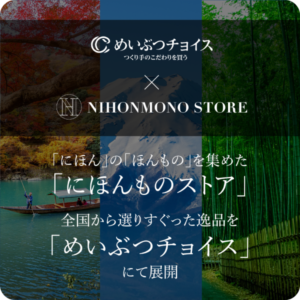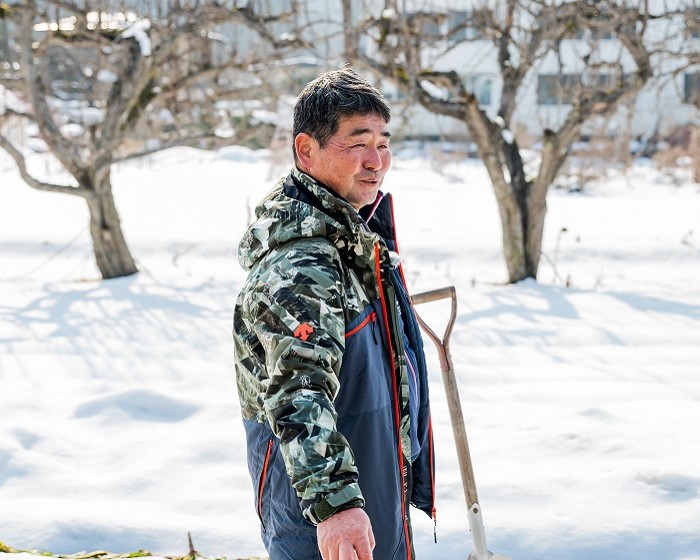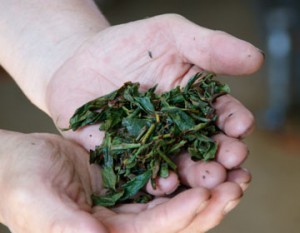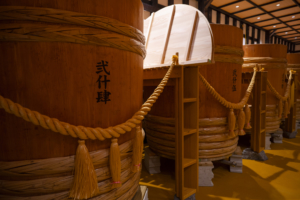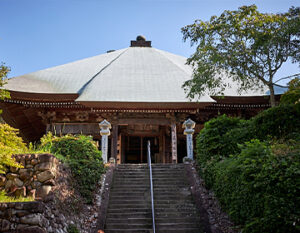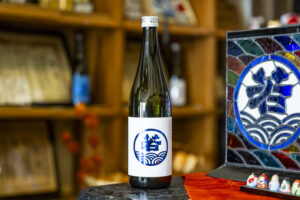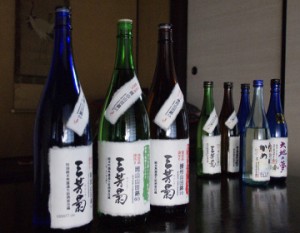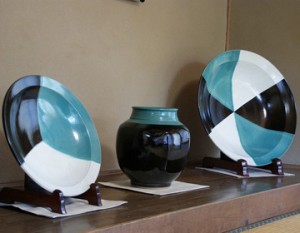In recent years, we have seen more and more mentions of “Yamagata Akane spinach” in the media in Yamagata Prefecture. This spinach, which has taken root as a traditional variety and is not defeated by the snow that falls in winter, is characterized by its lack of bitterness and strong sweetness. We visited Mr. Yoshiaki Shibata, a producer of “Yamagata Akane spinach”, one of the prefecture’s traditional vegetables.
Spinach that has “evolved” to be able to live in this area.
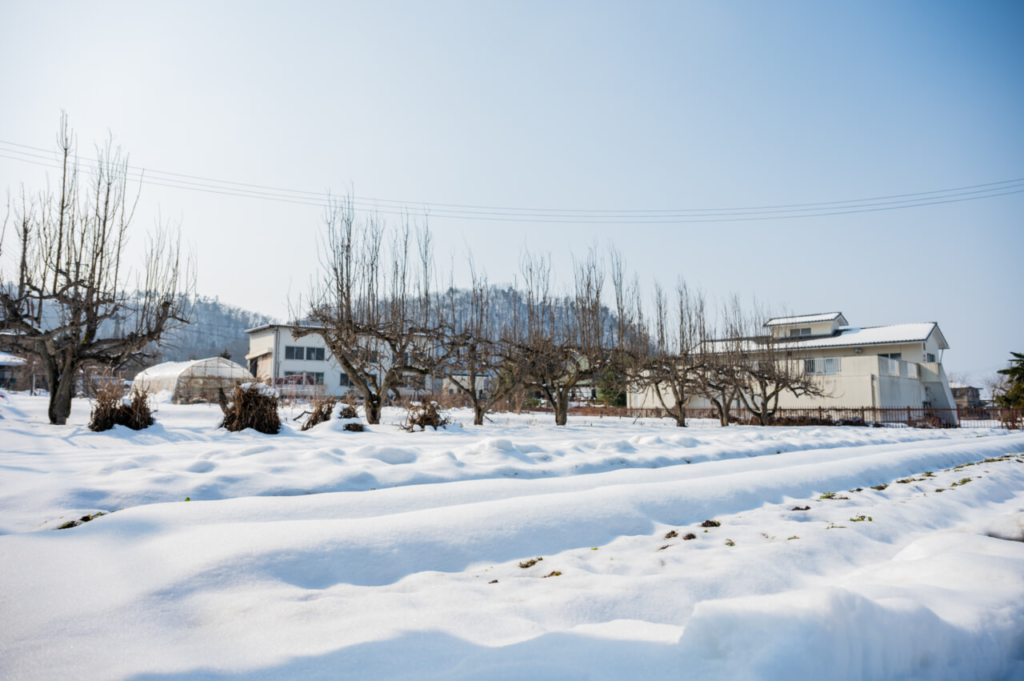
The Kazama district is located about 20 minutes by car from the center of Yamagata City. Here, Mr. Yoshiaki Shibata has been growing Akane spinach for three generations.
Although Akane spinach is now gaining recognition as a traditional vegetable of Yamagata Prefecture, in the Kazama district where Mr. Shibata farms, spinach with red roots has been the norm for a long time. It seems that it was already around when Mr. Shibata’s grandfather was a child, and Mr. Shibata says that it has been rooted in this area for over 100 years.
The most striking feature of Akane spinach is its eye-catching red roots and their size. They are a size larger than the varieties you can find in supermarkets, and can grow to nearly 300g per plant. And the nearly 70cm roots and supple stems are related to the way Akane spinach grows. This is because it grows with its roots firmly planted in the ground and is able to withstand the weight of around 50cm of snow without breaking, so the stems are extremely flexible.
Speaking of the other major characteristic, the taste, Mr. Shibata says, “I think the sweetness of Akane spinach is due to the snow”.
The sweetness is on a par with fruit
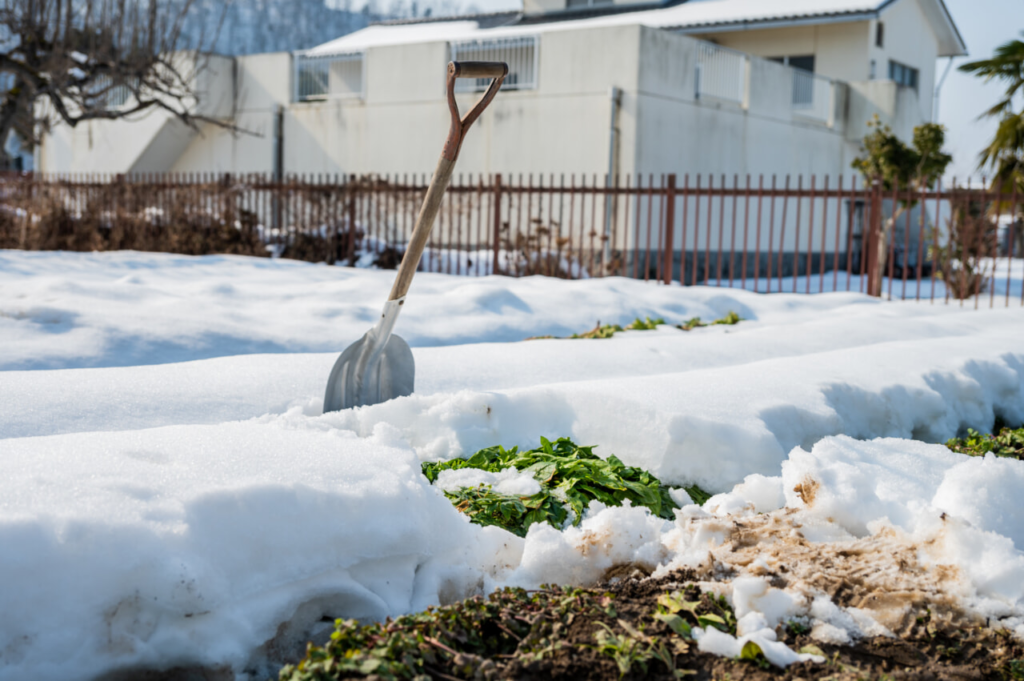
The stems of Akane spinach are known for their sweetness. When tested with a sugar meter, they were found to have a sugar content of around 18 degrees. This is a level that rivals melon and Shine Muscat grapes.
Of course, it doesn’t have the specialized sweetness of fruit, but if you try a mouthful, you’ll be surprised at the sweetness that spreads in your mouth and the lack of astringency. The reason it has such a high sugar content is that it converts its starches into sugar to prevent it from freezing in the winter.
As you’d expect, there is a reason for everything. It must have evolved to survive in this area.
Field and greenhouse: a matter of pride
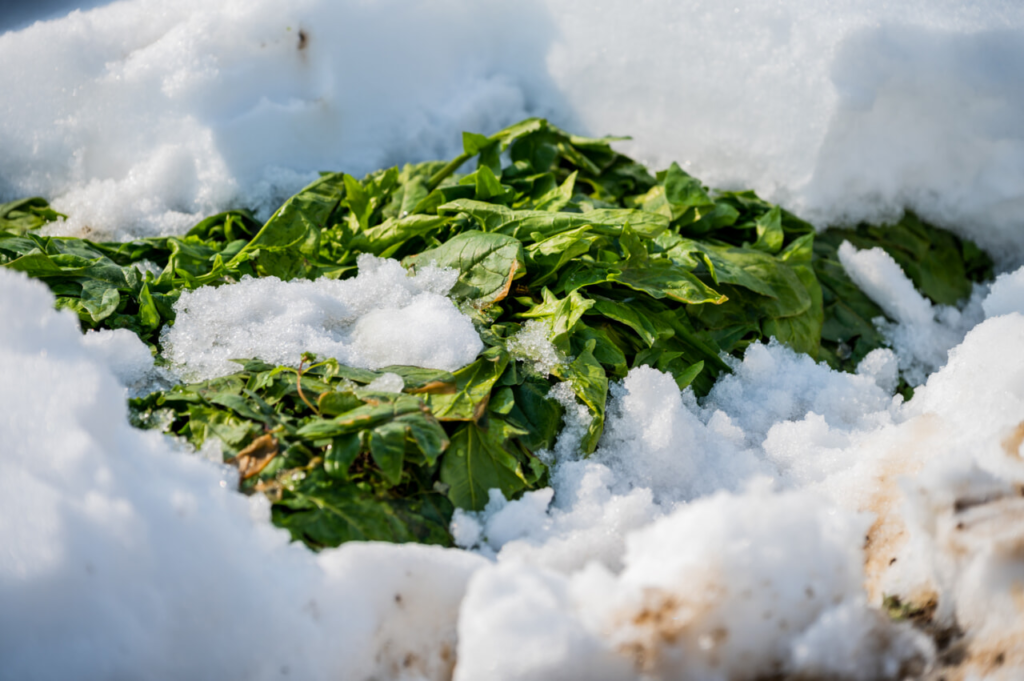
The number of producers of Akane spinach has increased since it started to receive attention in the media. However, unless it is cultivated in the snow with a lot of time and effort, it will not become sweet. It is also vulnerable to disease and groundwater, and if it rains for a few days close to harvest time, it will turn yellow and become unsuitable for shipping. It is a very difficult variety to handle, as it is difficult to harvest in large quantities in the first place.
So why does Mr. Shibata continue to cultivate Akane spinach?
The unchanged field of “Kazama’s Akaneko

In the days when local spinach was red-rooted, the spinach grown in the Kazama area was called “Kazama’s red-rooted spinach” and was well-loved by the people. Over time, however, the Western-type spinach, which has a high yield, became the standard on Japanese dinner tables, and the hard-to-grow Japanese-native type, such as red-rooted spinach, gradually disappeared.
In the Kazama district, there are probably no more than 10 farmers growing Akane spinach at the moment. Of these, Mr. Shibata continues to grow both open-field and greenhouse varieties.
Akane spinach is in season from November to February, but the open-field crop is harvested by mid-January. After mid-January, the main crop is grown in greenhouses, as the spinach spoils when it starts to thaw and forms puddles. Although they don’t deliberately cover the red-stemmed spinach grown in the greenhouses with snow, the soil inside the greenhouses freezes and the temperature drops to the point where the stems become limp. Also, because the environment is different from that of the open fields, they have had problems with the roots not becoming sweet. It is no ordinary task to grow and harvest the spinach in the open fields while enduring the snow, and in the greenhouses while enduring the freezing temperatures. What’s more, it is a difficult variety to handle. Mr. Shibata says that the only reason he continues to produce it is out of stubbornness.
“The fields that have been in my family for over 100 years since my grandfather’s generation are exactly the same as they were then. There are people who have been waiting for the Akane spinach that can be grown here, then and now. If that’s the case, I have to produce it. You can’t grow traditional vegetables without stubbornness.”
In the 1970s, when there were no greenhouses, the surrounding farmers would go away to find work during the winter, but this was not necessary in the Shibata family. This was because they could harvest Akane spinach even in winter. The motivation to continue growing Akane spinach, which has supported the family’s history, is also a driving force.
What they want is for people to “eat it deliciously”.
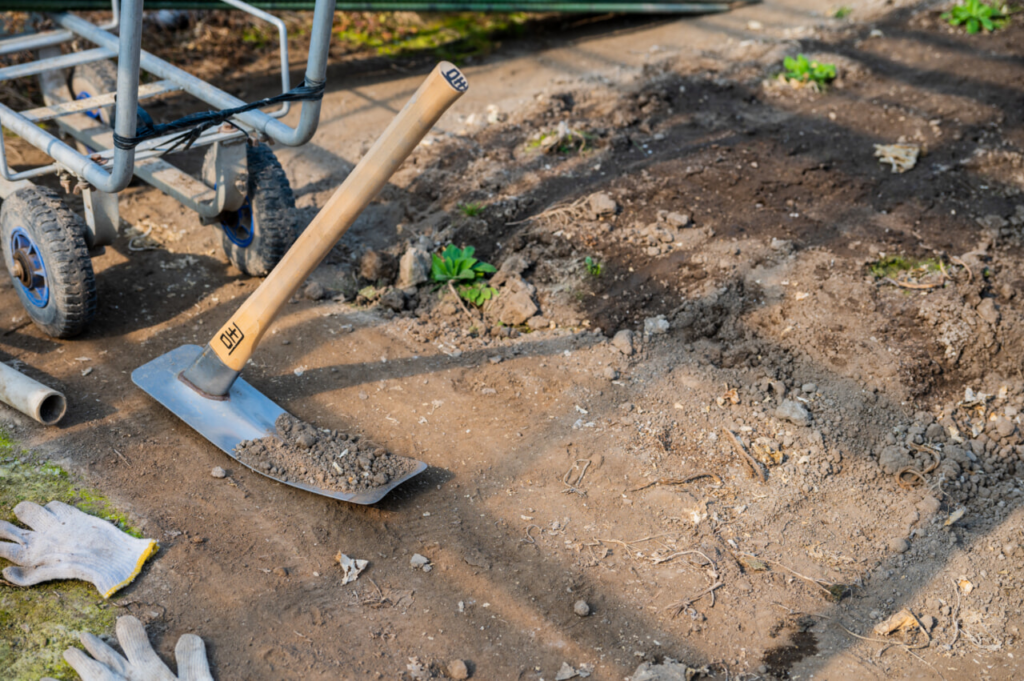
It is said that Akane spinach is sweetest when freshly harvested.
Unless it is cultivated for eating raw, it is usually boiled, but Akane spinach can be eaten raw. The sweetness of the red part of the stalk, combined with the freshness of the spinach, makes it taste almost like fruit. When Chef Masayuki Okuda of the Italian restaurant Al Checciano visited Mr. Shibata’s farm, he is said to have tasted the freshly harvested spinach straight off the vine without even saying hello.
“It makes me happy when people say it’s delicious. I want consumers to enjoy it,” he says, but he finds it difficult to increase production and distribute it nationwide.
The compatibility of traditional vegetables and mass production
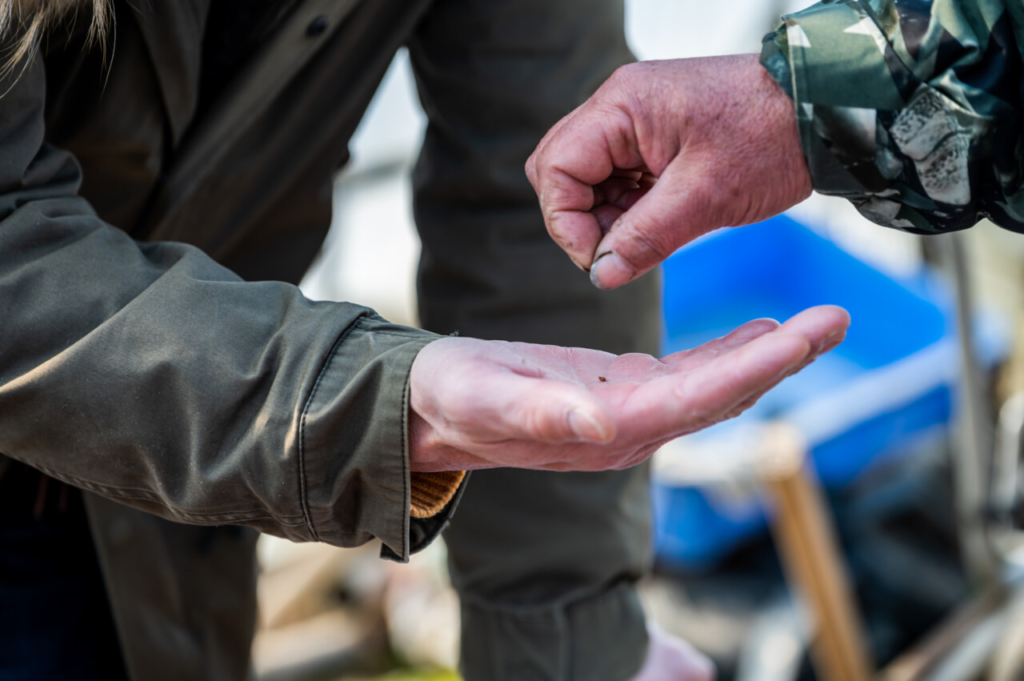
Red-rooted spinach is a labor-intensive crop that requires the seeds to be grown in-house, and only one bunch can be harvested from each seed. It is extremely difficult to mass produce, but the farmers have received an offer from a major supermarket chain that has taken notice of its deliciousness.
The plan was that if they could get it into the distribution system, they could deliver Akane spinach all over Japan, but it was not to be, as Mr. Shibata said, “It’s hard enough to harvest 20 liters a year, so when they asked for 2000 liters, there was no way we could do it.
Mr. Shibata alone cannot produce enough to deliver nationwide, but he thought that if the other farmers in the area could help, it might be possible. However, there is also the problem that if everyone does not grow spinach of the same size and thickness, it will not be possible to put it together in a shipment lot and get it into the distribution system. In addition, because Akane spinach is bulkier than regular spinach, although it is not heavy, it takes up more space, so the transportation costs are also higher than usual. The reason that such a mass production system is not practical for traditional vegetables that are difficult to cultivate is that it is still only used for distribution within the prefecture.
Simple cooking brings out the flavor of spinach “ohitashi”
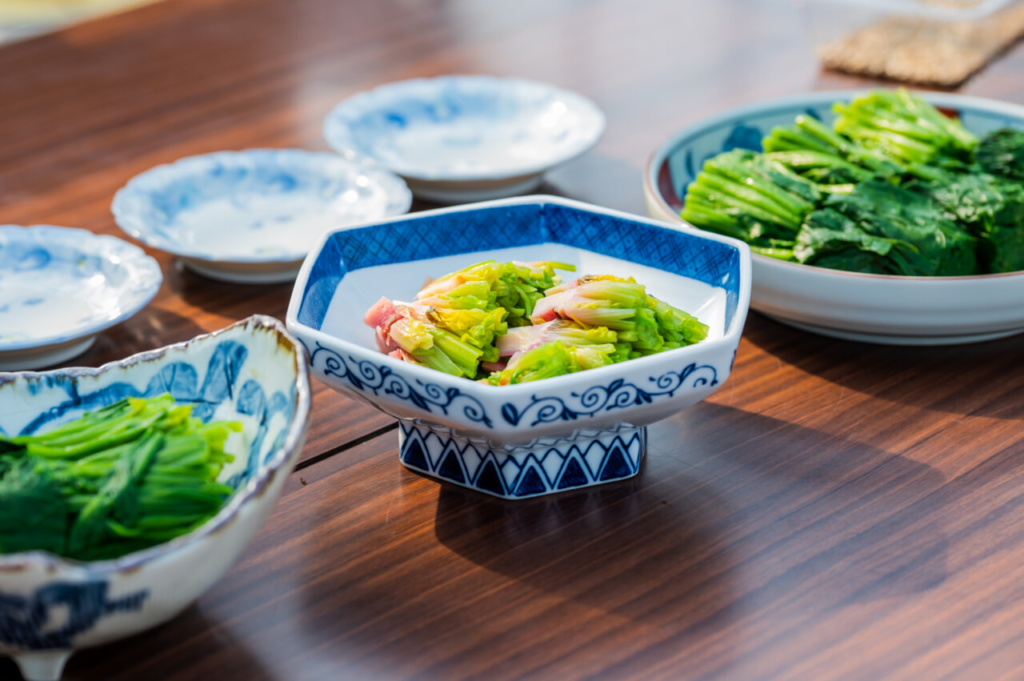
When I asked Mr. Shibata how to eat Akane spinach, he said, “It’s not really a recipe, but simply boiled spinach is exceptionally delicious.”
Boil the spinach briefly, then add a little bonito flakes and soy sauce. By using the traditional cooking method of not adding anything extra, you can really enjoy the strong aroma of the spinach itself. In addition, the sweetness of the stems, which retain their red color even after cooking, is brought out by the saltiness of the soy sauce, and you can’t help but agree that it’s completely different from regular spinach. It had a light flavor that you could eat even if there was a whole plateful, without any bitterness in your mouth.
Only by continuing can you see
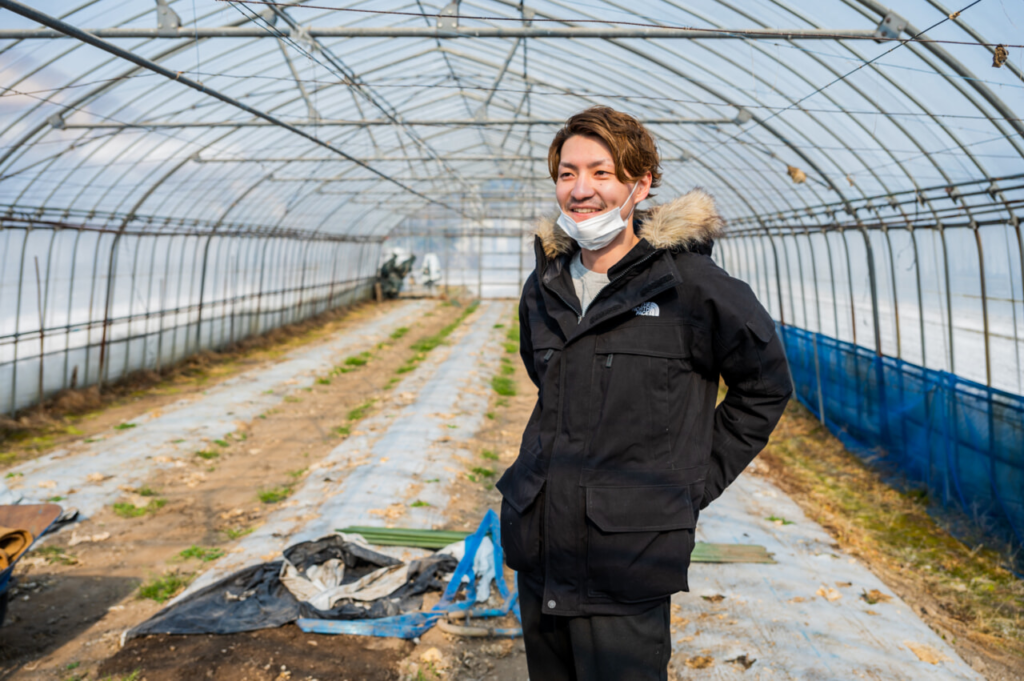
Mr. Shibata, who stubbornly continues to grow both field and greenhouse crops, says that he “will continue to grow Akane spinach for another 20 years, and I think I can do it”.
It is not easy to protect traditional vegetables. They have to harvest the seeds themselves, and it takes a lot of effort to get to the point of harvesting, so they don’t think too much about the profit. However, they say that traditional vegetables have existed in this area for a long time, and they remain because there are reasons for them to remain, even if they don’t try too hard.
However, it is now quite difficult to make a living solely from the cultivation of Akane spinach. Farmers in particular are affected by climate change and market pricing, and they also face difficulties such as the fact that the cost of materials has risen but this is not reflected in the price. Mr. Shibata has taken over the family farm because “his parents did”, but in fact his children are working outside the home.
“That’s why you have to be determined to make traditional vegetables,” says Mr. Shibata. Perhaps because he has seen his parents’ backs, Mr. Shibata’s son seems to be thinking that he would like to study and eventually become involved in the production of Akane spinach.
As for Mr. Shibata himself, he says that he feels content with his current life.
He faces the Akane spinach and goes to sleep thinking that another day has ended safely. Repeating such days is ideal, and he is actually able to do that.
“But because I’ve continued to do just one thing for so long, it’s like a dream from my old self to have the Yamagata Akane spinach get so much attention, and to have the opportunity to meet so many different people through interviews,” said Mr. Shibata.
Mr. Shibata says he will continue for another 20 years. The tradition of the Akane spinach, which has taken root in Kazama, will be passed on from Mr. Shibata to the next generation, and beyond.
